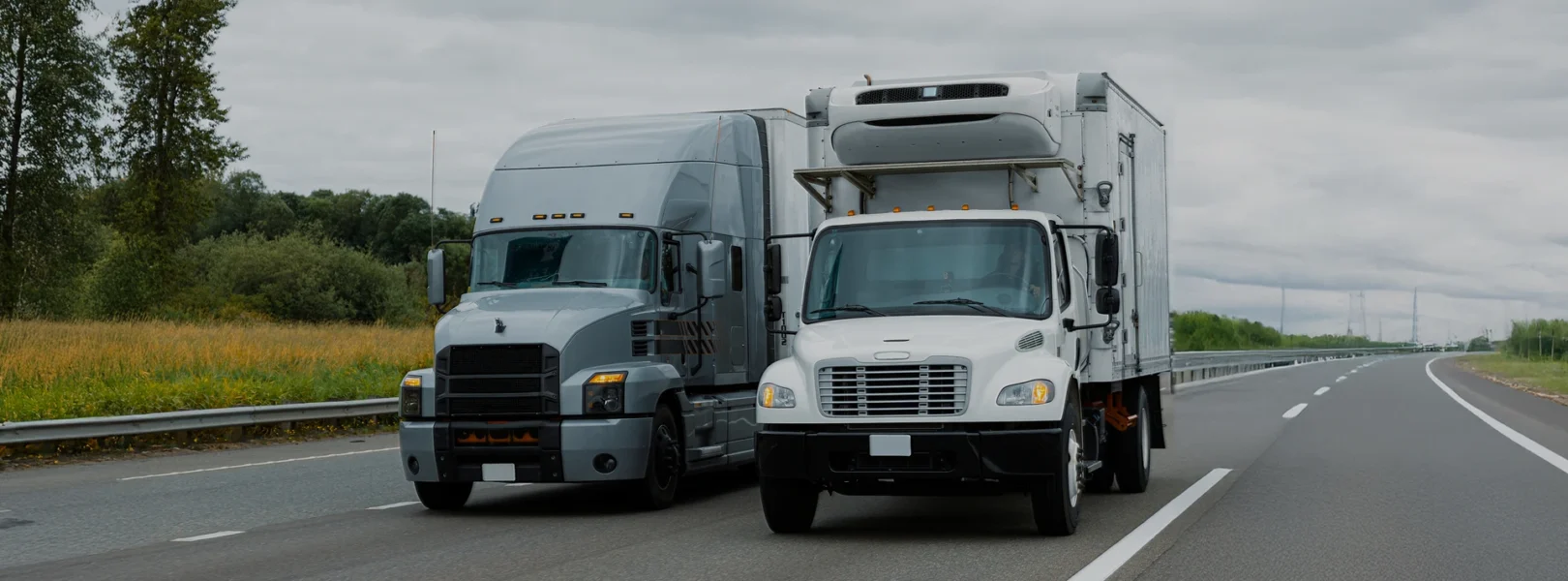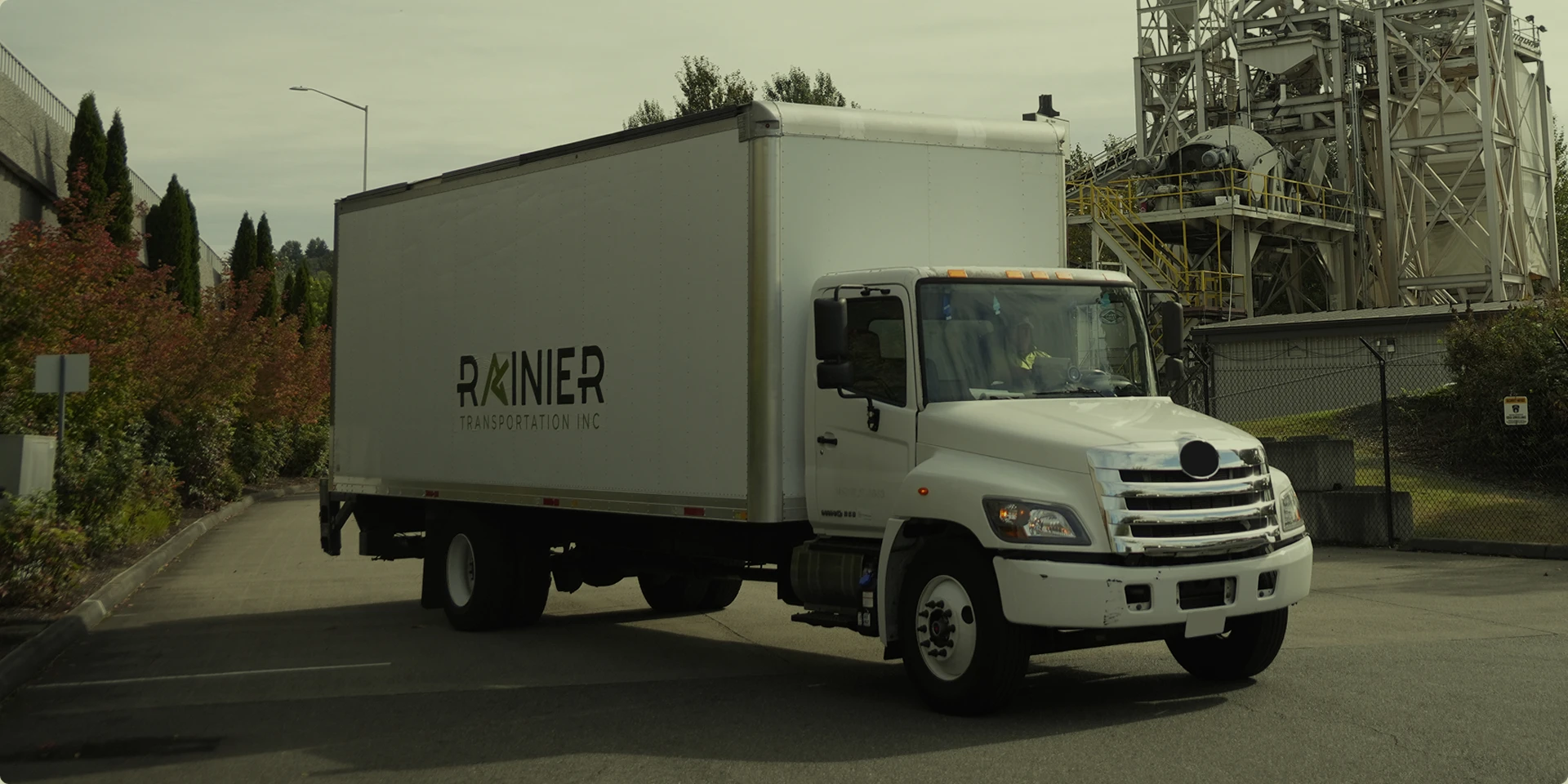FTL vs. LTL: Choosing the Right Option
JANUARY 24

Freight shipping has its language, packed with acronyms like BOL (Bill of Lading), TMS (Transportation Management System), or NMFC (National Motor Freight Classification). However, none are as essential for U.S. businesses as FTL (Full Truckload) and LTL (Less Than Truckload). Virtually every company that needs to move goods faces this question: Which trucking option, FTL or LTL, makes the most sense for my shipment?
Defining LTL and FTL
Let’s start with the basics. LTL (Less Than Truckload) is designed for smaller shipments that typically weigh between 150 and 15,000 pounds or loads up to 10 pallets. With LTL, multiple shipments from different shippers share a trailer, enabling every shipper to only pay for the space they use. However, it may involve more handling and slightly longer transit times.
FTL (Full Truckload) is usually best for larger shipments that exceed 15,000 pounds or require more than 10 pallets. In this scenario, you rent the entire trailer for your exclusive use. That means fewer stops, less handling, and often faster delivery. While it can cost more overall, FTL can be more efficient if you’re shipping a high volume of goods or want minimal risk of damage.
Factors to Consider When Choosing a Shipping Mode
Shipment Size and Weight
Measuring your freight’s weight and pallet count is a good starting point. LTL is typically the go-to if your goods fall below 15,000 pounds or around 10 pallets. Once you exceed these limits, consider FTL. It’s as simple as looking at how many pallets you have and whether they’ll fill an entire trailer.
Cargo Fragility
Fragile or high-value items generally do better with fewer “touch points.” FTL, which goes straight from origin to destination, limits loading and unloading. Meanwhile, LTL freight often gets shuffled around terminals, increasing the chances of damage or loss. Fewer handoffs can be worth the higher price tag if your products are easily broken or need extra care.
Shipping Speed
LTL shipments can make multiple stops as carriers consolidate and deconsolidate freight. FTL moves directly from pickup to drop-off, translating into faster arrival times. If your deadline is tight, FTL or an expedited service might be your safest bet.
Cost
For smaller shipments, LTL tends to be more budget-friendly because you only pay for the space you use. Larger loads might tip the scales in favor of FTL, especially if you can efficiently fill most of the trailer. Keep an eye out for “volume shipping,” a specialized LTL option that can offer extra savings on bigger but not quite truckload-sized moves.
Partial Loads vs. Volume Shipping
Both partial truckloads (a subset of FTL) and volume LTL shipments aim to optimize trailer space. Volume shipping might suit loads of 8,000–10,000 pounds, while partial truckload can handle up to around 27,500 pounds. Each allows you to share costs without compromising too much on transit speed.
Security Needs
If you’re shipping high-value or sensitive goods, FTL is often more secure thanks to fewer stops. LTL, while cost-effective, involves more handling and increases exposure to potential damage or theft.
Special Service and Equipment Requirements
For unique needs like white-glove delivery, liftgate service, or temperature control, LTL may offer more specialized add-ons. FTL is more straightforward but sometimes less flexible when it comes to extra services.

When LTL Makes the Most Sense
Smaller Shipments and Cost-Effectiveness
If you’re sending out smaller batches of goods (below 10 pallets), LTL is usually the most economical way to go. You only pay for the trailer space you occupy, so you’re not stuck footing the bill for an entire truck.
Flexible Delivery Timelines
When speed isn’t critical, LTL can help you keep costs down. Yes, your shipment might make a few stops along the way, but if your delivery window allows some cushion, you can use those savings elsewhere in your supply chain. Many small and midsize businesses accept slightly longer transit times to preserve their bottom line.
Additional Services and Special Handling
LTL carriers often offer add-ons like white-glove service, liftgates, freeze protection, or other specialized handling. This flexibility is helpful for shipments that need extra care at the pickup or delivery point. If you’re working with limited dock facilities or dealing with products that require temperature control, LTL carriers are well-equipped to help.
Frequent, Lower-Volume Shipments
If you consistently ship smaller loads, LTL is a smart choice. Regular LTL shippers can often negotiate favorable rates or take advantage of carrier programs that reward ongoing business. Over time, these cost efficiencies add up and can streamline your entire shipping process.
When FTL Makes the Most Sense
Large Shipments
FTL is an ideal match when your freight volume is high enough to fill or nearly fill an entire trailer. If you’re approaching or exceeding 15,000 pounds, or if you have more than 10 pallets, the math typically tips in favor of a full truckload. Instead of splitting space with other shippers, you gain exclusive use of the trailer.
Fragile or High-Value Goods
For items that need a little extra care, such as electronics, expensive raw materials, or machinery, FTL offers a simpler path from pickup to delivery. With minimal handling and no extra stops, you reduce the risk of damage or theft. When you ship something that must arrive in perfect condition, fewer “touch points” can be worth the extra expense.
Tight Deadlines and Faster Transit
If your customers want their orders yesterday, FTL is the fastest ground shipping option. Your truck goes directly from A to B, skipping the multiple terminal transfers that add time to LTL shipping.
Predictability and Consistency
With FTL, you’ll know exactly when your load will leave and when it should arrive, making planning easier. Rates and timelines also tend to be more predictable for larger shipments.

3PLs in LTL and FTL Shipping
What is a 3PL?
A 3PL (Third-Party Logistics Provider) manages shipping and logistics strategies, so you don’t have to. They often maintain relationships with multiple carriers and can handle warehousing, distribution, and specialized packaging.
Advantages of Partnering with a 3PL
Working with a 3PL offers access to a broad network of carriers so that you can secure better rates. Their volume-based pricing often beats what you’d negotiate on your own. They also bring deep expertise, guiding you through freight classification, proper documentation, and any regulatory hurdles.
How a 3PL Can Help You Decide
A good 3PL evaluates every shipment’s size, timeline, and budget to recommend the most efficient option. That might be an LTL volume shipment, a partial truckload, or a standard FTL run.
Tips for U.S. Businesses
Documentation & Compliance
Make sure you understand the key paperwork for U.S. shipping, such as the Bill of Lading (BOL) and any customs documents if you cross borders. Missing or inaccurate paperwork can cause costly delays.
Optimizing Packaging and Palletizing
Efficient packaging isn’t just about neatness. It minimizes wasted space and allows for using standard pallet sizes, reducing your freight classification and risk of damage. Properly labeling each pallet can also speed up processing at terminals and warehouses.
Scheduling and Planning
A bit of foresight goes a long way. Identify your busiest shipping seasons and book capacity early to lock in better rates. If you wait until the last minute, you might face higher costs or limited carrier availability.
Summary:
Choosing between FTL and LTL boils down to shipment size, speed, security, and the importance of special handling. LTL is the frugal choice for smaller loads and flexible timelines, whereas FTL shines when you have larger shipments, tight deadlines, or cargo that needs extra protection.
If you’re still unsure, partnering with Rainer Transportation can make the decision process easier. We can compare carrier rates, secure specialized services, and even provide warehousing or fulfillment solutions if you need them. Whether you lean toward LTL or FTL, we ensure your freight arrives on time and in good shape.
Ready to get started? Reach out for a consultation and see which shipping method fits your business best.
Back to Blog

